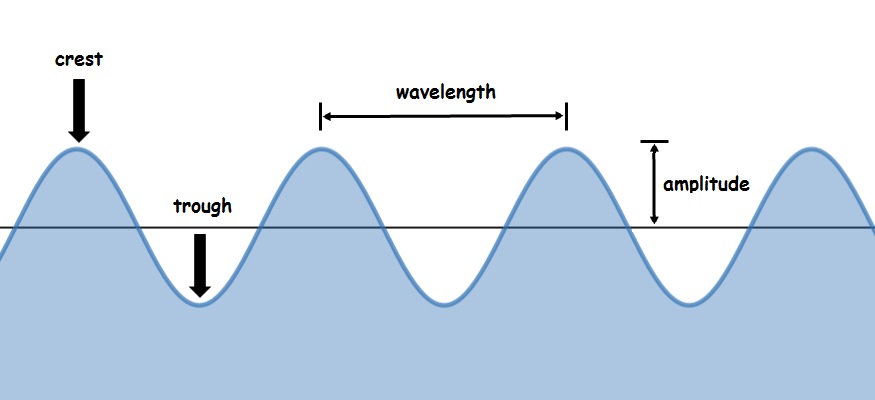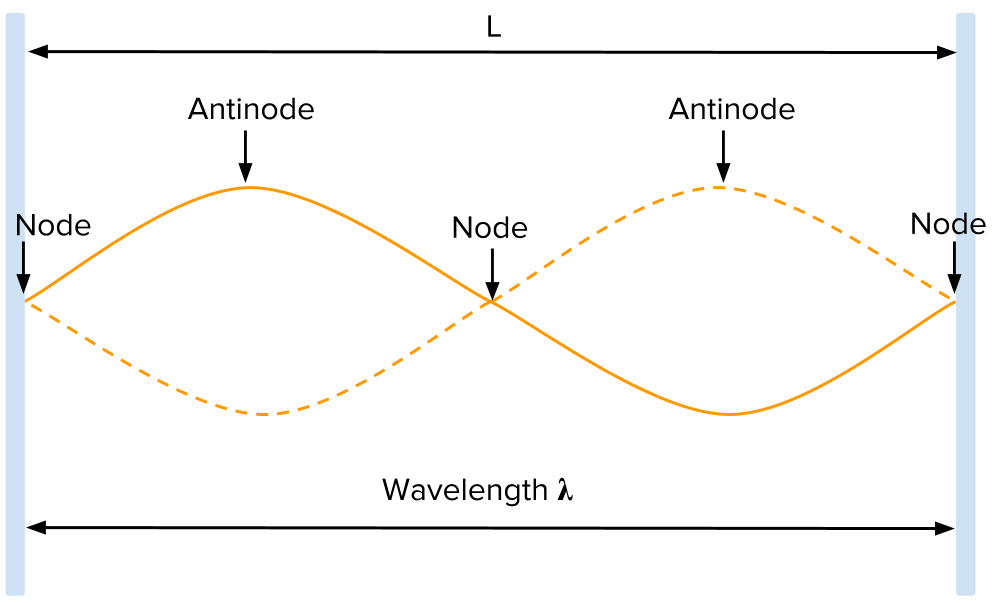Waves
Types of Waves
Traveling Waves: Waves that propagate through a medium
Mechanical Waves: The only type of wave that needs a medium to run through
Transverse Waves: Particles of the medium that vibrate perpendicular to the direction of the wave's velocity
Longitudinal Waves: Particles of the wave vibrate parallel to the direction of the wave's velocity

The Anatomy of a Wave
Period: the amount of time for a wave to go through one full cycle
Frequency: Number of vibrations per second
Wavelength: The length of one full wave
Wave speed: the speed at which energy is transferred by a wave
Amplitude: The maximum displacement of a wave from equilibrium

Wave Speed
Wave Speed Equation:
is velocity
is wavelength
is frequency
This is in the formula booklet
Inference and Superposition
Principle of Superposition: The displacement caused by two or more waves is the sum of its displacements
Standing Waves
Node: a place in the standing wave where the displacement is 0
Anti-Node: a place in the standing wave where displacement is maximum

A standing wave is created due to the superposition caused by the reflection fo the wave
Graphical Analysis
Displacement-Time Graph: a graph where the x-axis is the time passed and the y-axis is the displacement of a single point. Using this graph you can find the amplitude and period
Position-Time Graph: a graph where the x-axis is the physical position of the points, and the y-axis is the displacement. Using this graph you can find the amplitude and wavelength. Using this on a longitudinal graph can show us centers of high and low pressure

Transmission of sound: sound travels as a series of compressions (C) and rarefactions (R) in the medium. The particles simply oscillate back and forth about their individual equilibrium positions, and this displacement (oscillation) causes the sound waves to travel.
Compressions are regions where air pressure is higher than the surrounding air pressure.
Rarefactions are regions where air pressure is lower than the surrounding air pressure.
You know it is a point of compression or rarefaction based on the slope of the graph. If the graph is pointing downwards at that specific point, its a point of compression. If it is pointing upwards, its a point of rarefaction
Phase Shift
How much the graph is shifted left or right
Phase Shift =
Delta x is the distance between two equal areas of the graph
All points on a standing wave between two nodes are in phase with each other
The reflection of the wave in a standing wave is exactly out of phase by pi